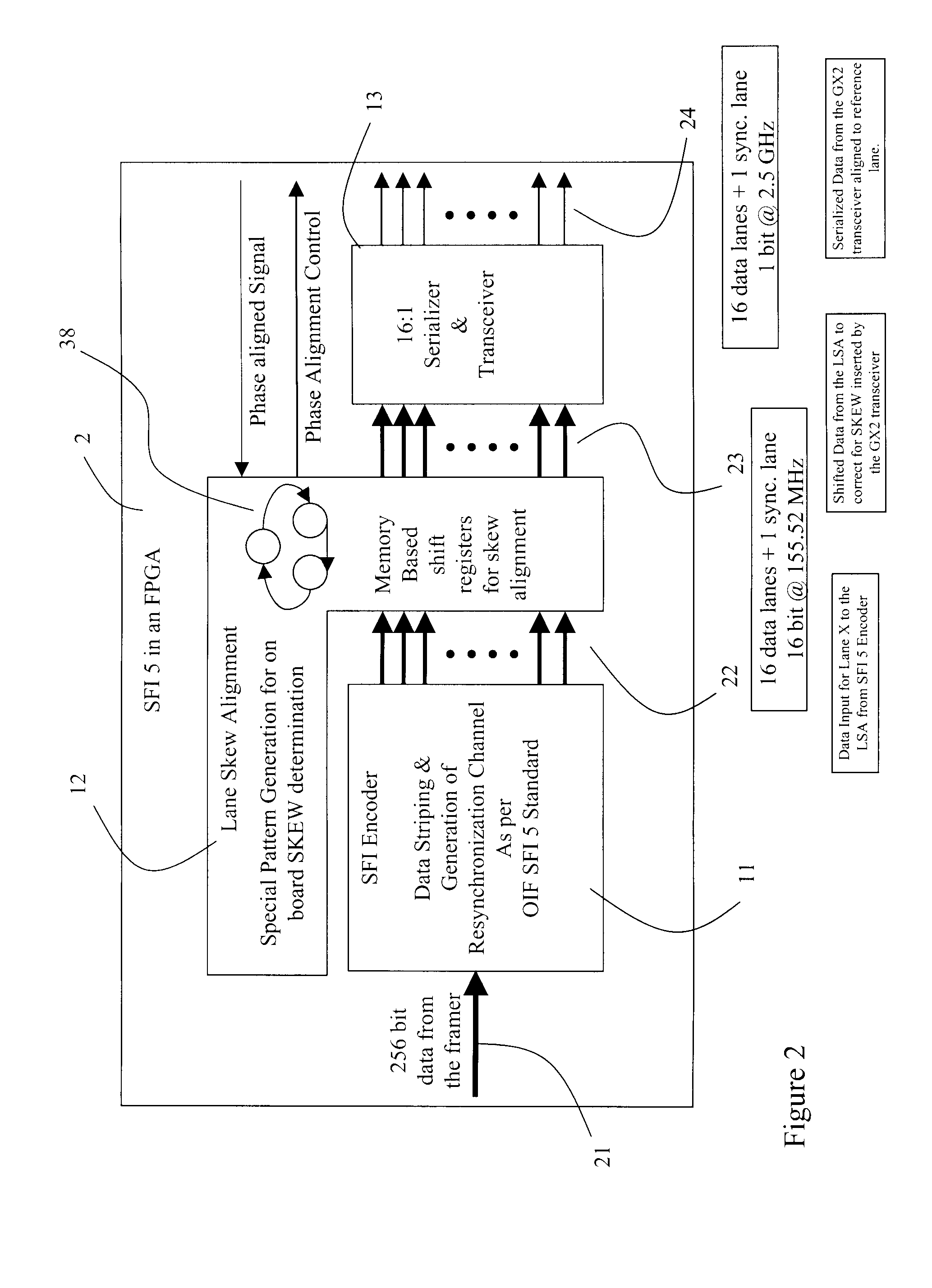Aligning data on parallel transmission lines
a technology of parallel transmission lines and alignment lines, which is applied in the direction of instruments, generating/distributing signals, baseband system details, etc., can solve the problems of power consumption and circuit size increase, inability to fully meet the skew requirement between lanes, and inability to achieve phase relationship between internal transmit clocks and serdes devices available in current field programmable gate arrays (fpga) or other commodity silicon devices
- Summary
- Abstract
- Description
- Claims
- Application Information
AI Technical Summary
Benefits of technology
Problems solved by technology
Method used
Image
Examples
Embodiment Construction
[0041]To be successful in delivering a fully encapsulated solution that is not dependent on signals from other devices, e.g. receivers, the present invention includes components placed on a printed circuit board (PCB) 1 between an FPGA 2 and an SFI-5 interface 3. The illustrated embodiment is one example of the components that may be place on the PCB 1 to implement the solution; however, other configurations using multiple components may be used to provide the same function.
[0042]With reference to FIG. 1, a cross-point switch 4 and a phase comparator 6, based on a D Flip Flop 7, are mounted on the PCB 1 between the FPGA 2 and an SFI-5 interface 3. A plurality of input lanes, e.g. 0 to 16, of the cross-point switch 4 are routed from the FPGA 2, through the cross-point switch 4, directly to corresponding lanes, e.g. 0 through 16, of the SFI-5 interface 3. The plurality of lanes, e.g. seventeen, are made up of data bits 0 through 15 and a de-skew bit lane. A control interface 8 to the ...
PUM
 Login to View More
Login to View More Abstract
Description
Claims
Application Information
 Login to View More
Login to View More - R&D
- Intellectual Property
- Life Sciences
- Materials
- Tech Scout
- Unparalleled Data Quality
- Higher Quality Content
- 60% Fewer Hallucinations
Browse by: Latest US Patents, China's latest patents, Technical Efficacy Thesaurus, Application Domain, Technology Topic, Popular Technical Reports.
© 2025 PatSnap. All rights reserved.Legal|Privacy policy|Modern Slavery Act Transparency Statement|Sitemap|About US| Contact US: help@patsnap.com



